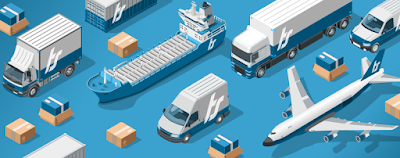Depending on your business and its objectives, your supply chain should be planned and organised around diverse sets of criteria. Products with short lifecycle may require a supply chain that emphasises on speedy delivery. While highly competitive businesses may instead focus on supply chain productivity in order to obtain effective costs. If there is an extensive ambiguity around demand, then being responsive to the demand is more important than efficiency. A more flexible approach might be appropriate for commerce where there are unpredictable demand peaks or a highly seasonal demand. Your strategy should be associated with the business pressures and customer requirements you face in the corporate market.
Below are some of the main steps that are required to develop an effective supply chain strategy:
Take a General View
Supply chain management needs more than just sales and inventory statistics. Forecasting technology has become much more consistent and coarse. Forecasting techniques backed up by high-performance and technological resources can make reliable forecasts based on sales information as well as the outside demographic statistics, topographical styles, and even weather forecasts.
To obtain the best supply chain solution provider, the approach must require to involve integrating the flow of facts both upstream and downstream so that all sponsors can respond to these demands in a timely manner.
Notice Industry Styles
Each business has its own set of demand drivers, business standards, and supply chain management procedures. This evolves over time. Although you can’t reconfigure your supply chain strategy in reaction to every passing technology or inventory management fad, it’s not too challenging to see which way the wind is blowing when it comes to major changes.
If a number of your providers are beginning to demand certain types of data, are shifting to just-in-time supply prototypes, or if suppliers seem to be merging around a particular data standard, you must require sufficient time preparing to change your supply chain strategy so that you’re prepared to accept the changes when easy. You can wait and see, up to a point; a worse strategy is inflexibly resisting avoiding disturbance or technology investments. If your business winds up on the external of what has become a trade standard, it could cost you a lot more loss in the business in the long run.
Recognise your Company’s Exclusive Value Proposal
What is your competitive position within the supply chain? What are the minimum supplies that will make you an option for clients and what elements can distinguish you from competitors in the supply chain? Your strategy should emphasise on that differentiation, and the added value you can offer through your supply chain.
Integrate Risk Management
Find the risks that are a threat to your company’s best performance, both internal and external. What are the frailest or least protected “links” in your supply chain? How can you alleviate those risks? Come up with action strategies, classify alternate suppliers or transportation resources, and allocate team members for particular response actions when there is a breakdown in the supply chain.
Lastly, implement your supply chain strategy to deliver the best solutions in such a way that you can continuously monitor your performance and adjust accordingly to enable upgrading.
Conclusion
The supply chain strategy development method is both cross-functional and requires continuous checking and alteration. Market trends change. Your consumers and suppliers change. By implementing a continuous improvement process, your supply chain strategy can quickly adapt and respond to those changes and provide the best solutions to your business.











